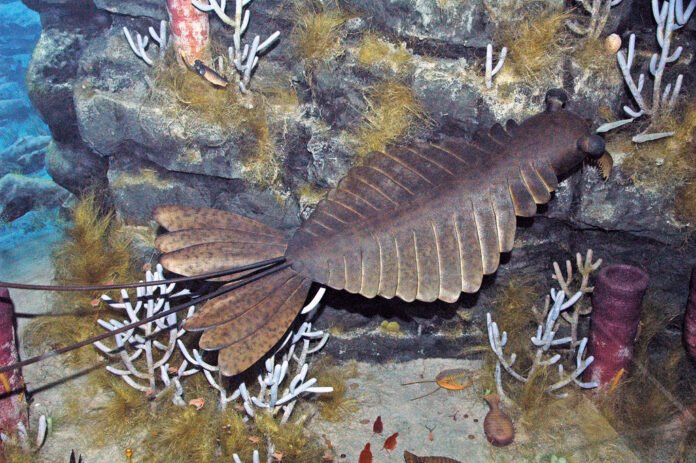In an astonishing turn of events, construction work on a new artificial island off the coast of Java, Indonesia, has dredged up a treasure trove of ancient fossils—more than 6,700 specimens in total—from a sunken landscape once known as Sundaland. Among the abundant fish, reptile, and mammal remains, two hominin skull fragments have emerged as the first evidence of Homo erectus beyond Java, reshaping our understanding of early human dispersal in Southeast Asia.
Sundaland: From Land Bridge to Shallow Sea
An Ancient Lowland Exposed by Sea-Level Change
- Sundaland refers to the now-submerged continental shelf that once connected present-day Borneo, Sumatra, Java, and mainland Asia during periods of low sea levels.
- Around 130,000 to 140,000 years ago, sea levels were as much as 100 meters lower, transforming the shelf into a sprawling savanna-like plain.
- The recent dredging for island-building disturbed sediment from a former river valley on this shelf, bringing to the surface remains that had lain buried underwater for millennia.
Fossil Assemblage Paints a Lush Prehistoric Ecosystem
- Excavated fossils include hippopotamus, crocodile, elephant, Komodo dragon, rhinoceros, big cats, and large hoofed mammals akin to bison or buffalo.
- The diversity suggests a savannah-riverine environment, where watercourses supported a variety of megafauna and provided crucial resources for early hominins.
Homo erectus Skull Fragments: A First Outside Java
Breakthrough Discovery
- Two partial Homo erectus skulls were identified among the dredged material, marking the first time this species has been found off Java, indicating its range extended onto Sundaland’s plains.
- Dating of the surrounding sediments places these fossils at approximately 140,000 years ago, a period when Java’s population of H. erectus was thought to be isolated.
Implications for Hominin Dispersal
- The new finds challenge the long-held view that Java was H. erectus’s last refuge. Instead, they suggest regular movement between the Asian mainland and Java via Sundaland.
- Contact with other archaic human groups—including Denisovans or Neanderthals—becomes plausible, opening the door to hypotheses of cultural exchange or genetic interbreeding outside Africa.
Evidence of Hominin Behavior: Cut Marks and Bone Breakage
Hunting and Butchery Practices
- Several bovid (hoofed mammal) bones display percussion fractures, indicating deliberate marrow extraction.
- Shells and limb bones of water turtles bear cut marks, pointing to systematic butchering and meat processing.
Cultural Innovation or Adoption?
- Hunting and marrow extraction are known in later Pleistocene hominins on the Asian mainland but were not documented in earlier Javan H. erectus sites.
- The presence of these butchery marks suggests either independent innovation on Sundaland or adoption of new subsistence techniques through intergroup contact.
Methodology: From Dredge to Laboratory
Collaborative Effort
READ MORE: Scientists Uncover the Hidden World Within the Echidna’s Pseudo-Pouch
- The research team, led by archaeologist Harry Berghuis of Leiden University, collaborated with Indonesian authorities and dredging contractors to systematically collect and document the fossil-bearing sediment.
- Over several months, sediments were sieved, sorted, and analyzed, yielding the largest single-day haul of Sundaland fossils ever recorded.
Dating and Contextual Analysis
- Optically Stimulated Luminescence (OSL) dating and stratigraphic correlation confirmed the age of the river valley deposits at circa 140,000 years.
- Microfossil and pollen analyses are underway to reconstruct the paleoenvironment in greater detail.
A Sunken Savanna’s Significance for Human Evolution
Revisiting Java’s “Last Outpost”
- Prior to this discovery, Javan sites such as Ngandong were considered the easternmost bastion of H. erectus, persisting until around 108,000 years ago.
- The new skulls indicate that populations periodically ventured off Java when Sundaland was exposed, perhaps in response to climatic fluctuations or resource availability.
Expanding the Narrative of Archaic Humans
- These fossils compel a reexamination of migration models that have portrayed Southeast Asian hominins as isolated island populations.
- They underscore the dynamic nature of Pleistocene landscapes and their role in facilitating—or constraining—hominin movement.
Future Directions: Unraveling Sundaland’s Secrets
Ongoing Excavations and Surveys
- Additional dredging campaigns are planned to target adjacent river valleys and coastal shallows, seeking further hominin and faunal remains.
- Geophysical surveys aim to map the ancient topography of Sundaland, identifying potential habitation sites now submerged beneath the Java Sea.
Genetic and Comparative Studies
- Efforts are underway to extract protein sequences or ancient DNA from the best-preserved hominin fragments. Successful recovery could illuminate relationships with other archaic humans.
- Comparative analysis with mainland and island H. erectus specimens will refine our understanding of regional variation and adaptation.
Conclusion: A Drowned Landscape Resurfaces
The accidental dredging of an artificial island off Java has resurrected a lost world—both geologically and anthropologically. Fossils from this once-vast savannah bridge a critical gap between island Java and continental Asia, revealing that Homo erectus was neither confined nor static. As Sundaland emerges from the depths, so too does a richer, more interconnected chapter of human evolution. The submerged plains of our past beckon researchers to explore the origins and odysseys of our ancient relatives, reminding us that the story of humanity is far more complex—and surprising—than any single island can contain.
